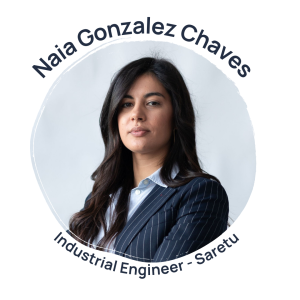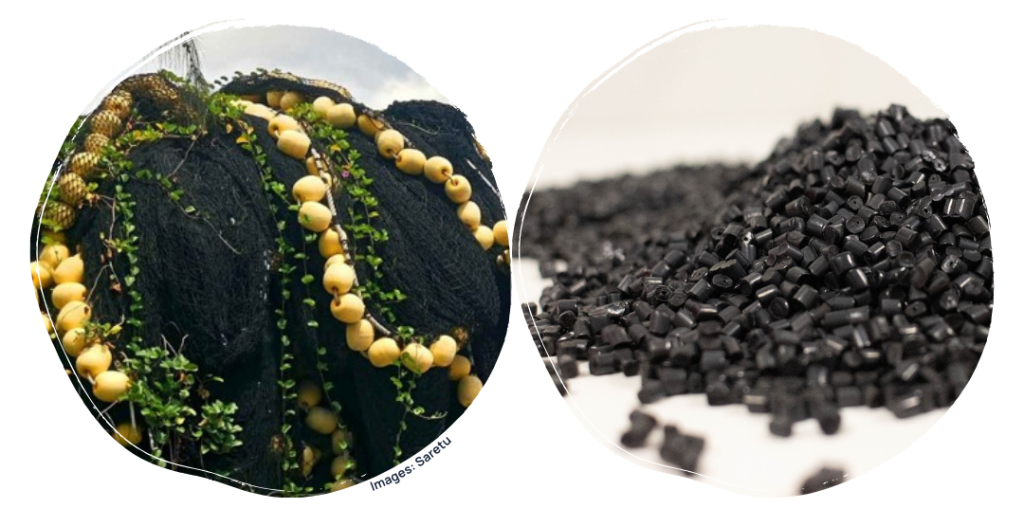Full Circle: recycled dolly ropes from old fishing ropes
Published 31/03/2025
Dolly ropes are short bundles of plastic ropes that protect fishing nets from the wear and tear that comes with being dragged along the seabed. They’re traditionally manufactured from polyethylene or polypropylene, are essential gear for trawler fisheries and are used in great quantities all over the world. However, like many fishing gears, they have a limited lifespan, requiring frequent replacement. Meanwhile, tonnes of purse seine nets, made with polyamide (or nylon) are discarded at ports each year, ending up in landfill or accumulating in locations where they don’t belong.

SEARCULAR is working on a solution that addresses both of these problems with one answer: using discarded purse seine nets to make new dolly ropes. A shining example of a circular economy in practice, this solution facilitates the whole process, from the collection of end–of-life nets at ports, right through to supplying new, recycled, and improved ropes to be used by fisheries. Previous testing has also shown that manufacturing dolly ropes from polyamide instead of polyethylene creates a more durable rope that is more resistant to abrasion, leading to a longer lifespan and reducing the quantity of microplastics released.
We discussed all things dolly rope with Naia Gonzalez Chaves, industrial engineer at Saretu, and lead researcher for this solution, to find out more about what a year of collaborative working has achieved.
Looking back over the first year of SEARCULAR, is there any work you are particularly proud of in your team?
NGC: Our project is divided into four tasks with different processes, deadlines and challenges, and after one year we can proudly say we have accomplished the first two of these tasks and reached the stage where we have developed our polyamide pellets for extrusion, which is a huge milestone for us. To get to this stage we’ve collected 4 tonnes of end-of-life purse seine fishing gear from ports, and transported it to our facilities where we have processed the nets, sorting the different materials and removing floats and other components. This leaves us with around 2-3 tonnes of material (polyamide), which we then clean and process into the smaller pellets, which is a really important step of the recycling process.
It’s taken a lot of work to get to this stage and there have certainly been challenges and moments where things didn’t go as planned, but it’s so important to take a moment to realise the successes and achievements of the team so far, and there are certainly a lot of those!

Waste end-of-life purse seine nets discarded at port (left), Polyamide pellets produced from recycling purse seine nets (right).
Looking forward to the next 6 months, what are your team’s plans and goals?
NGC: The first thing we want to do is reflect on our processes so far, and find solutions to make those processes run even more efficiently, for example making our collection and cleaning methods better. The next step will then be to produce the dolly ropes from the pellets we have created. Once we have some sample ropes, we will test the new ropes onboard our partner Spanish trawler vessels. We’ve started lab testing, trying out different ways of compounding the pellets with additives to meet the requirements that the dolly ropes demand. We have to work closely with our rope manufacturers to ensure that the materials we choose are going to be suitable for large-scale production, as the end goal will ultimately be upscaling the production and getting the ropes used at an industrial scale.
The most important thing at this stage is communicating with and learning from our stakeholders. It’s not about our team manufacturing something and saying ‘Trust me, this works’, it’s about letting the people who are actually going to be using it – for example the rope manufacturers and fishermen – have a say and shape the solution, it’s an iterative process.
What does your work mean for SEARCULAR audiences, and why is staying in contact with stakeholders so important?
NGC: This project builds bridges between people with a shared goal: making the fishing sector more sustainable. As a team we are continuously learning from people who are experts at what they do, the fishers, gear manufacturers, lab scientists, designers and anyone who contributes to our work. By maintaining contact with our stakeholders throughout, we ensure an iterative process which ultimately means we reach a better quality end product because we’ve had input from everyone. Solutions can’t just work in theory, they need to work in practice!
SEARCULAR is for everyone, it’s about building a future where the fishing industry can thrive without compromising the health of our oceans or the livelihoods of future generations. It’s about the policymakers whose work underpins the advance towards a sustainable sector and implementing a circular economy and also the industries that require support to transition to these new ways of working. Sustainability is not an illusion, it is a reality towards which we work hard and invest a lot of effort.